The demand for phased adjustments in Q1-Q3 of 2023 will weaken. By the end of the year, it is expected to benefit from the significant weakening of the impact of the epidemic, the phased recovery of consumer confidence and the completion of destocking.
Since then, there has been a small rebound, and the market conditions in application fields such as automotive electrification, industrial automation, data centers, and renewable energy have gradually recovered.
Chips are widely applied in various fields, including automotive electrification, industrial automation, data centers, and renewable energy. These fields require different types of chips to meet their specific needs. Here are some types of chips that may be applied in each field:
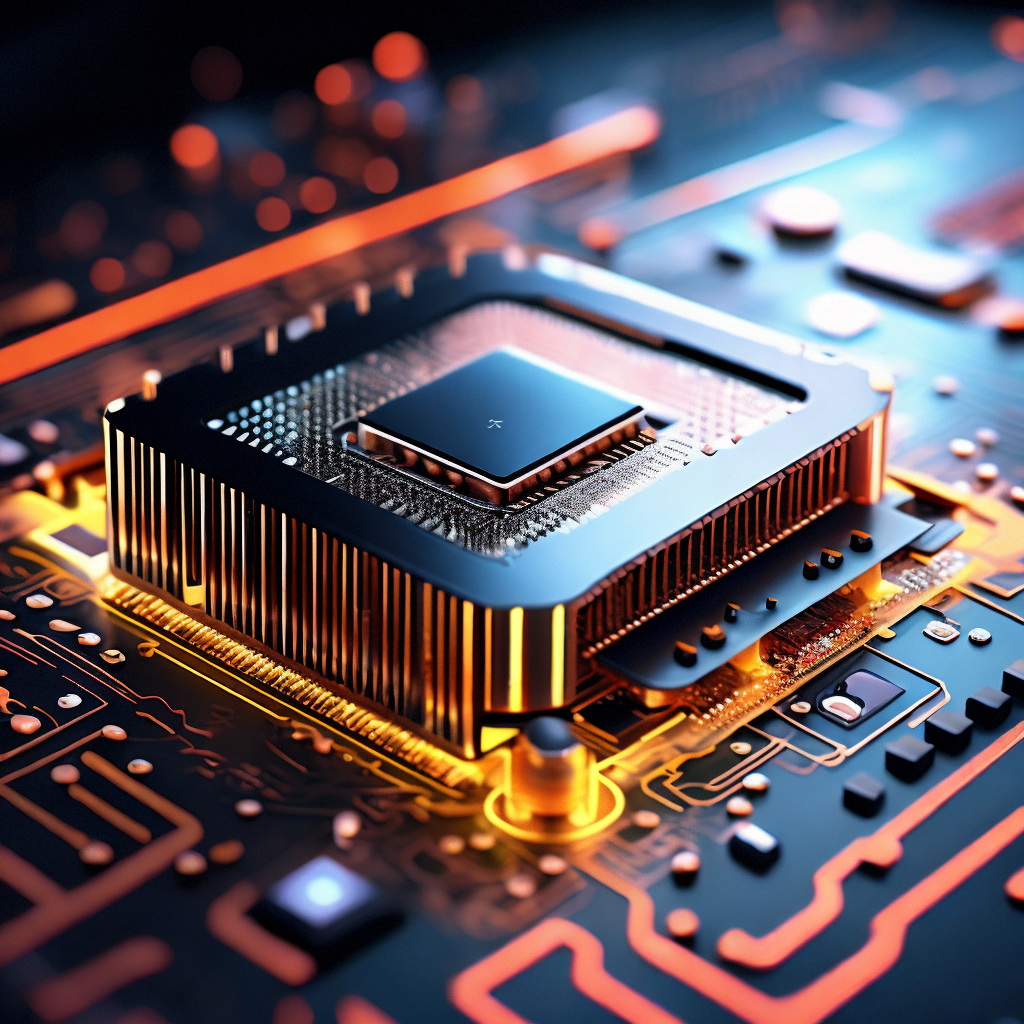
Automotive Electrification:
* Electric Vehicle Controller Chips: Used for battery management, motor control, and vehicle communication in electric vehicles.
This chip is a critical component in the EV's powertrain and is responsible for managing various aspects of the vehicle's operation, including:
●Battery Management: Controlling and optimizing the charging and discharging of the EV's battery to ensure its longevity and efficiency.
●Motor Control: Regulating the power supplied to the electric motor, which drives the vehicle's wheels, to manage speed, torque, and efficiency.
●Vehicle Communication: Facilitating communication between different vehicle components, such as the battery, motor, and other control systems, to ensure smooth and coordinated operation.
●Safety Features: Implementing safety measures, such as overcurrent protection, thermal management, and fault detection, to prevent accidents or damage to the vehicle.
●Regenerative Braking: Managing regenerative braking systems that capture and store energy during braking, contributing to increased energy efficiency.
●User Interface: Providing feedback and information to the driver through the vehicle's dashboard or display screens.
* Automotive Infotainment System Chips: Encompass entertainment, navigation, and connectivity functions.
These chips are essential for creating a seamless and enjoyable in-car entertainment experience. Some of the functions and features associated with these chips include:
●Audio and Video Playback: These chips support the playback of various media formats, including music, video, and even games, through the vehicle's audio and video systems. They can decode and process media files to provide a high-quality entertainment experience.
●Navigation and GPS: Automotive entertainment system chips often integrate GPS (Global Positioning System) functionality, allowing for navigation and mapping features. They enable real-time traffic updates, turn-by-turn directions, and points of interest (POI) information.
●Connectivity: These chips provide connectivity features, including Bluetooth, Wi-Fi, and in some cases, cellular data connections. Passengers can connect their smartphones, tablets, or other devices to the car's infotainment system to stream content, make calls, and access internet services.
●Touchscreen Interface: These chips are responsible for the user interface on the infotainment system's touchscreen display. They process touch input and provide a user-friendly interface for controlling various functions.
●Voice Recognition: Some automotive entertainment system chips support voice recognition technology, allowing drivers and passengers to control features and access information through voice commands.
●App Integration: Many modern infotainment systems support app integration, allowing users to access their favorite apps like music streaming services, messaging, and navigation apps directly through the car's interface.
●Smartphone Mirroring: Automotive entertainment system chips enable smartphone mirroring technologies like Apple CarPlay and Android Auto, which mirror a smartphone's screen and apps onto the car's display for seamless integration.
●Rear-Seat Entertainment: In vehicles with rear-seat entertainment systems, these chips play a crucial role in delivering content to rear-seat displays, such as movies, games, and music.
* Automotive Sensor Interface Chips: Used for processing vehicle sensor data, such as cameras, radar, and ultrasonic sensors.
These chips are essential for gathering, interpreting, and transmitting information from a wide range of sensors used in automotive applications. Here's an overview of their functions:
●Signal Conditioning: Automotive sensor interface chips provide signal conditioning for raw sensor data. They amplify, filter, and preprocess sensor signals to ensure accuracy and reliability.
●Analog-to-Digital Conversion (ADC): Many sensors generate analog signals, and these chips typically incorporate ADCs to convert analog sensor data into digital format, making it easier for microcontrollers or other processing units to work with the data.
● In many vehicles, multiple sensors, such as accelerometers, gyroscopes, and magnetometers, are used for various applications like stability control and navigation. Sensor interface chips help fuse and combine data from these sensors to provide a more comprehensive view of the vehicle's surroundings and dynamics.
●Communication Protocols: These chips support various communication protocols to transmit sensor data to the vehicle's central control units or processing systems. Common protocols include CAN (Controller Area Network), LIN (Local Interconnect Network), and more.
●Fault Detection and Diagnostics: Sensor interface chips often include built-in diagnostics and fault detection mechanisms to identify sensor malfunctions or inconsistencies. This is crucial for ensuring vehicle safety and performance.
●Temperature Compensation: In the automotive environment, temperature variations can impact sensor accuracy. These chips may incorporate temperature compensation features to maintain precise sensor readings across a range of operating conditions.
●Power Management: Power-efficient operation is crucial, especially in battery-powered or energy-conscious systems. Sensor interface chips may include power management features to optimize energy consumption.
●Interfacing with Microcontrollers: These chips interface with microcontrollers or other processing units in the vehicle's electronic control systems. They ensure the data collected by sensors is transmitted accurately and efficiently to the processing unit.
●Customization and Calibration: Some automotive sensor interface chips allow for calibration and configuration to adapt to specific sensor types, making them versatile for use with various sensor models.
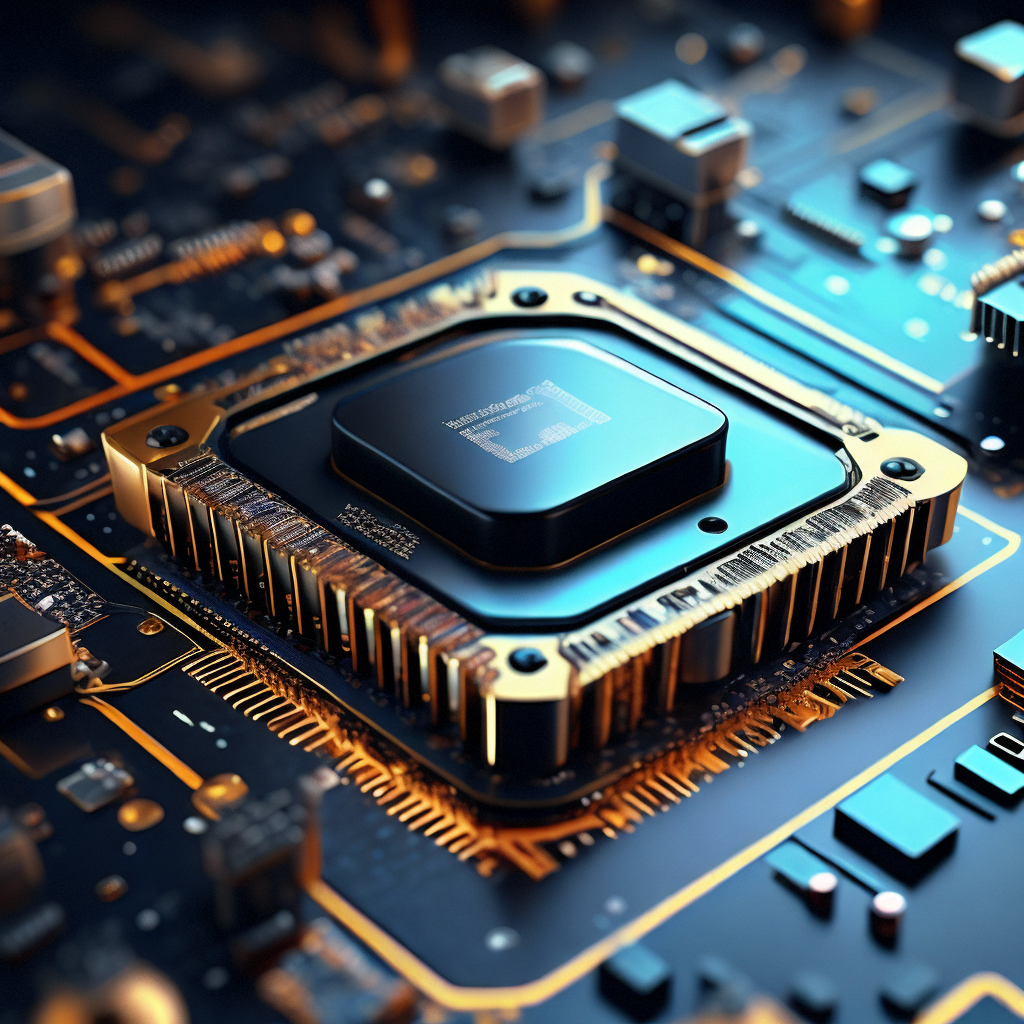
Industrial Automation:
* PLC (Programmable Logic Controller) Chips: Used for logic control and monitoring tasks in industrial automation.
PLC chips are at the core of a PLC system, providing the logic and control necessary to automate various processes. Here are some of their essential functions and features:
▼Digital and Analog I/O Handling: PLC chips interface with a wide range of digital and analog sensors and actuators, making it possible to monitor and control equipment and processes.
▼Real-time Control: PLCs are designed to perform real-time control tasks with precise timing and accuracy, making them suitable for applications that require deterministic operation.
▼Programmability: These chips can be programmed using ladder logic, function block diagrams, structured text, or other programming languages to define the logic and behavior of the automated system.
▼I/O Processing: They manage input and output data processing, including data from sensors and commands to actuators. PLCs are responsible for executing control algorithms and responding to input changes.
▼Communication Interfaces: PLC chips often include communication interfaces such as Ethernet, serial ports, and industrial fieldbuses like Modbus, Profibus, and EtherCAT for data exchange with other automation devices and control systems.
▼Reliability: PLCs are built to withstand harsh industrial environments, providing reliability, robustness, and longevity, which are crucial in industrial applications.
▼Safety Features: Some PLC chips support safety features like emergency stop (E-stop) monitoring and safety interlock systems to ensure worker and equipment safety.
▼Scalability: PLCs can be expanded with additional I/O modules, allowing for scalability and flexibility in handling a growing number of sensors and actuators.
▼Data Logging and Reporting: Some PLCs have the capability to log data and generate reports, providing insights into the performance of the industrial system and supporting predictive maintenance.
▼Fault Handling: PLCs can detect and respond to faults and errors, making it possible to implement fault-tolerant control systems.
* Industrial Communication Chips: Support various industrial communication protocols like Modbus, Profibus, and EtherCAT.
These chips enable reliable and efficient data transfer between various devices and components in industrial environments. Here are some key functions and features of industrial communication chips:
▼Industrial Communication Protocols: These chips support a variety of industrial communication protocols, such as Modbus, Profinet, EtherNet/IP, EtherCAT, CANopen, and DeviceNet, allowing for seamless interoperability between devices from different manufacturers.
▼Real-Time Communication: Many industrial processes require real-time communication for precise control and synchronization of devices. Industrial communication chips are designed to support real-time data exchange between controllers, sensors, and actuators.
▼Network Interface: These chips provide network interfaces such as Ethernet, RS-232, RS-485, and other industrial fieldbuses to establish connections between devices and systems.
▼Data Packet Handling: They manage the packaging and transmission of data packets, ensuring data integrity and efficient communication.
▼Reliability and Determinism: Industrial communication chips are built to operate in harsh industrial environments and provide high levels of reliability and determinism, crucial for industrial automation applications.
▼Device Management: They facilitate device discovery, addressing, and configuration, making it easier to integrate new devices into the industrial network.
▼Security Features: Security is a critical aspect of industrial communication. These chips often include features like data encryption, authentication, and firewall capabilities to protect against unauthorized access and data breaches.
▼Diagnostics and Monitoring: Some chips have built-in diagnostic capabilities to monitor network health, detect faults, and provide data for predictive maintenance.
▼Scalability: Industrial communication chips are often designed to be scalable, allowing for the addition of more devices to the network as needed.
▼Redundancy: For mission-critical applications, redundancy features in these chips ensure network reliability by providing backup communication paths and devices.
▼Integration with Controllers: Industrial communication chips interface with PLCs (Programmable Logic Controllers), SCADA (Supervisory Control and Data Acquisition) systems, and other control units to enable centralized monitoring and control.
* Industrial Sensor Interface Chips: Used for processing and amplifying sensor data.
These chips play a crucial role in industrial automation, monitoring, control, and data acquisition. Here are the key functions and features of these chips:
▼Signal Processing: Industrial Sensor Interface Chips are responsible for processing and optimizing raw sensor signals to ensure data accuracy and reliability.
▼Analog-to-Digital Conversion (ADC): Many industrial sensors produce analog signals, and these chips typically include Analog-to-Digital Converters (ADCs) to convert analog sensor data into digital format for processing by microcontrollers or other processing units.
▼Sensor Powering: These chips often provide power management functions for sensor powering, ensuring the sensors operate properly.
▼Data Filtering and Calibration: Industrial Sensor Interface Chips can perform data filtering to remove noise and interference and data calibration to ensure accurate measurements.
▼Communication Interfaces: They typically support various communication interfaces such as SPI, I2C, UART, and others to transmit sensor data to other systems or controllers.
▼Multi-Sensor Support: Some Industrial Sensor Interface Chips can connect and process data from multiple sensors simultaneously, enabling multi-sensor fusion for comprehensive information.
▼Environmental Adaptation: In industrial environments, factors like temperature, humidity, and vibration can affect sensor performance. These chips often include environmental adaptation features to provide reliable data regardless of environmental conditions.
▼Self-Check and Fault Detection: They typically support self-check and fault detection features to monitor sensor status and identify potential issues.
▼Low-Power Design: For battery-powered applications, these chips often feature low-power designs to extend battery life.
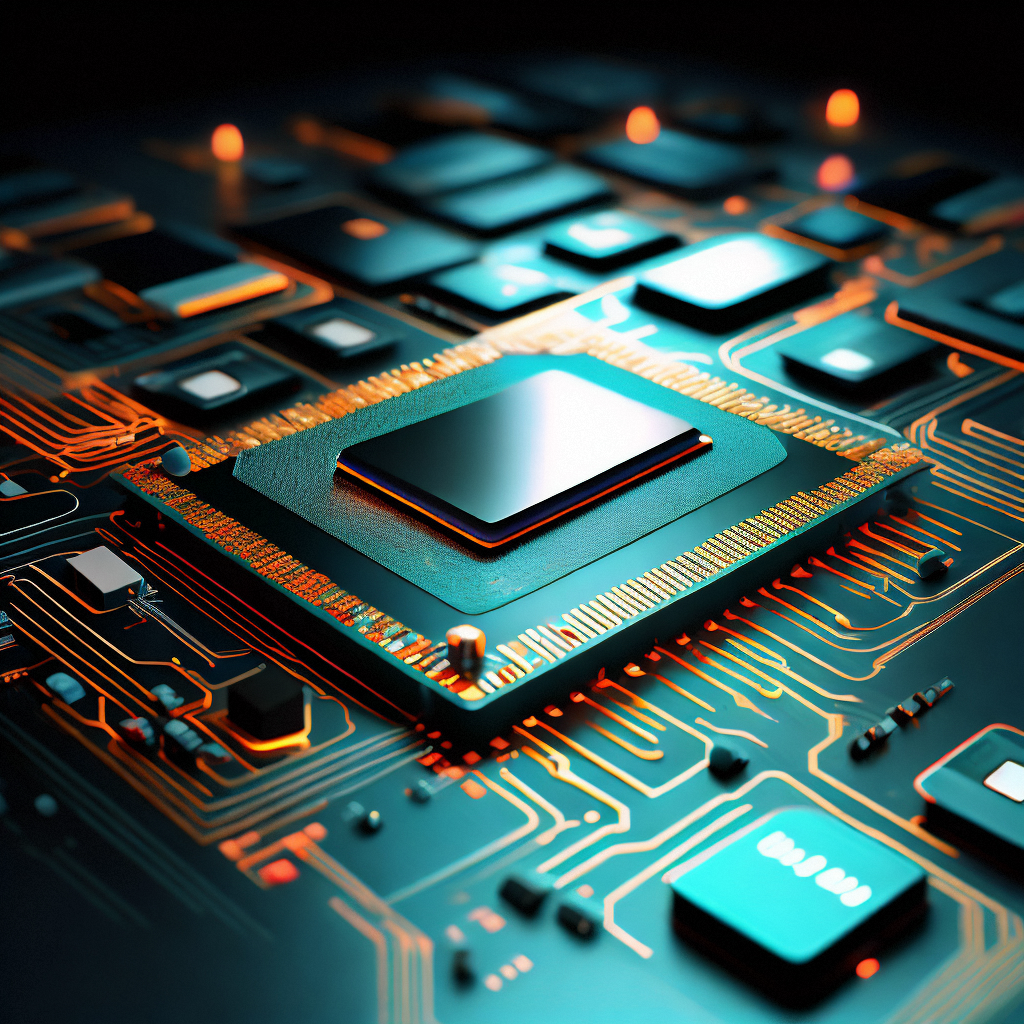
Data Centers:
* Server Processor Chips: Used for computing tasks in data center servers.
These chips are specifically designed to handle the computing tasks and workloads associated with server operations. Here are the key features and functions of server processor chips:
★High-Performance Computing: Server CPUs are engineered for high-performance computing, enabling them to handle complex and demanding tasks. They are designed to provide the processing power needed to serve multiple clients and users simultaneously.
▼Multiple Cores: Most server processors have multiple cores, allowing them to execute multiple threads and tasks in parallel. Multi-core processors enhance the server's multitasking capabilities and overall performance.
★Hyper-Threading: Many server CPUs support hyper-threading, a technology that allows each physical core to act as two logical cores. This can improve multitasking and workload efficiency.
▼Large Cache: Server CPUs typically have a large cache memory to reduce latency and improve data access speeds, which is crucial for server workloads.
★Error-Correcting Code (ECC) Memory Support: Servers require high data reliability. Server processor chips often support ECC memory, which can detect and correct memory errors to prevent data corruption.
▼Energy Efficiency: Energy efficiency is crucial in data centers. Server CPUs are designed to offer a balance between high performance and low power consumption to minimize operating costs and reduce heat generation.
★Virtualization Support: Server processors often have hardware-level virtualization support, which is essential for running virtual machines and enabling cloud computing services.
▼Security Features: Data security is a top priority for servers. Many server CPUs incorporate security features like hardware encryption and support for secure boot processes.
★Scalability: Servers can be scaled up by adding more CPUs or processors with multiple sockets. These chips support scalability to meet the growing computational demands of data centers.
▼Reliability and Redundancy: Servers are built for continuous operation. Redundancy features are often integrated into server processors to ensure high reliability and minimize downtime.
★Compatibility: Server CPUs are compatible with server-grade chipsets and motherboards, which are designed for enterprise-level use.
▼Workload Optimization: Server processors are optimized for specific workloads, such as database management, web hosting, virtualization, or AI/ML tasks, and may include features tailored for these applications.
* Network Chips: Used for data center network switching and routing.
These chips play a pivotal role in the functionality and performance of networking equipment and devices. Here are some key features and functions of network chips:
■ Data Packet Processing: Network chips process data packets for transmission across computer networks, ensuring proper routing and delivery of data.
■ Data Link Layer Functions: These chips often handle data link layer tasks, including Ethernet frame encapsulation and error detection.
■ Packet Forwarding and Routing: Network chips are capable of forwarding and routing data packets based on routing tables and protocols, such as IP routing in routers.
■ Switching and Bridging: They support data switching and bridging functions for Ethernet networks, allowing devices to connect and communicate within local area networks (LANs).
■ Quality of Service (QoS): Some network chips provide QoS features to prioritize certain types of data traffic, ensuring a high level of service for mission-critical applications.
■ Firewall and Security: Network chips often incorporate security features like firewall capabilities, intrusion detection, and encryption to protect data and networks from threats.
■ Network Address Translation (NAT): In routers and gateways, these chips can perform NAT, allowing multiple devices to share a single public IP address.
■ Deep Packet Inspection (DPI): Some advanced network chips support DPI to analyze and filter network traffic at the application layer, enabling content filtering and traffic shaping.
■ Multicast and Broadcast Support: They handle multicast and broadcast data transmission, which is important for streaming, video conferencing, and other group communication.
■ Packet Capture and Analysis: Network chips can capture and analyze network traffic for diagnostic and troubleshooting purposes, often used in network monitoring equipment.
■ Energy Efficiency: Power efficiency is important in networking devices, and some network chips are designed for low power consumption to reduce operating costs and heat generation.
■ Ethernet and Network Interface Controllers (NICs): Network chips can be found in Ethernet NICs, which are used for network connectivity in computers and servers.
■ Firmware and Software Support: Network chips often come with firmware or software development kits (SDKs) to enable customization and adaptation to specific networking requirements.
* Storage Controller Chips: Manage storage devices in data centers, such as solid-state drives and hard drives.
These chips play a crucial role in data storage systems, ensuring data integrity, reliability, and efficient data access. Here are the key features and functions of storage controller chips:
▲Data Storage Management: Storage controller chips manage data storage devices such as hard disk drives (HDDs), solid-state drives (SSDs), and storage arrays.
▲Data Transfer and I/O Handling: They handle data transfer between the storage devices and the host system, including reading and writing data, error correction, and data integrity checks.
▲RAID Support: Many storage controller chips support RAID (Redundant Array of Independent Disks) configurations for data redundancy and performance improvement.
▲Caching: These chips often include caching mechanisms to accelerate data access by storing frequently used data in high-speed storage (e.g., SSDs) for quicker retrieval.
▲Data Protection: Storage controller chips provide data protection features such as error correction, data checksums, and wear-leveling for SSDs to ensure data reliability and integrity.
▲Virtualization Support: For storage virtualization, these chips enable the management of multiple physical storage devices as a single logical storage resource.
▲Interface Support: They offer a range of interfaces, such as SATA (Serial ATA), SAS (Serial Attached SCSI), and PCIe (Peripheral Component Interconnect Express), to connect to different storage devices.
▲Storage Management Protocols: Storage controller chips support protocols like SCSI (Small Computer System Interface), NVMe (Non-Volatile Memory Express), and more for efficient storage management and communication.
▲Energy Efficiency: Energy-efficient design helps minimize power consumption in storage systems, contributing to reduced operational costs and heat generation.
▲Data Encryption: Some storage controller chips provide hardware-based encryption to protect sensitive data at rest.
▲Compatibility: They are compatible with various operating systems and file systems to ensure seamless integration into storage solutions.
▲Redundancy and Failover: In enterprise storage systems, these chips often support redundancy and failover mechanisms to ensure uninterrupted access to data.
Storage Management and Monitoring: Storage controller chips may offer features for remote management, monitoring, and diagnostic capabilities to ensure the health and performance of storage devices.
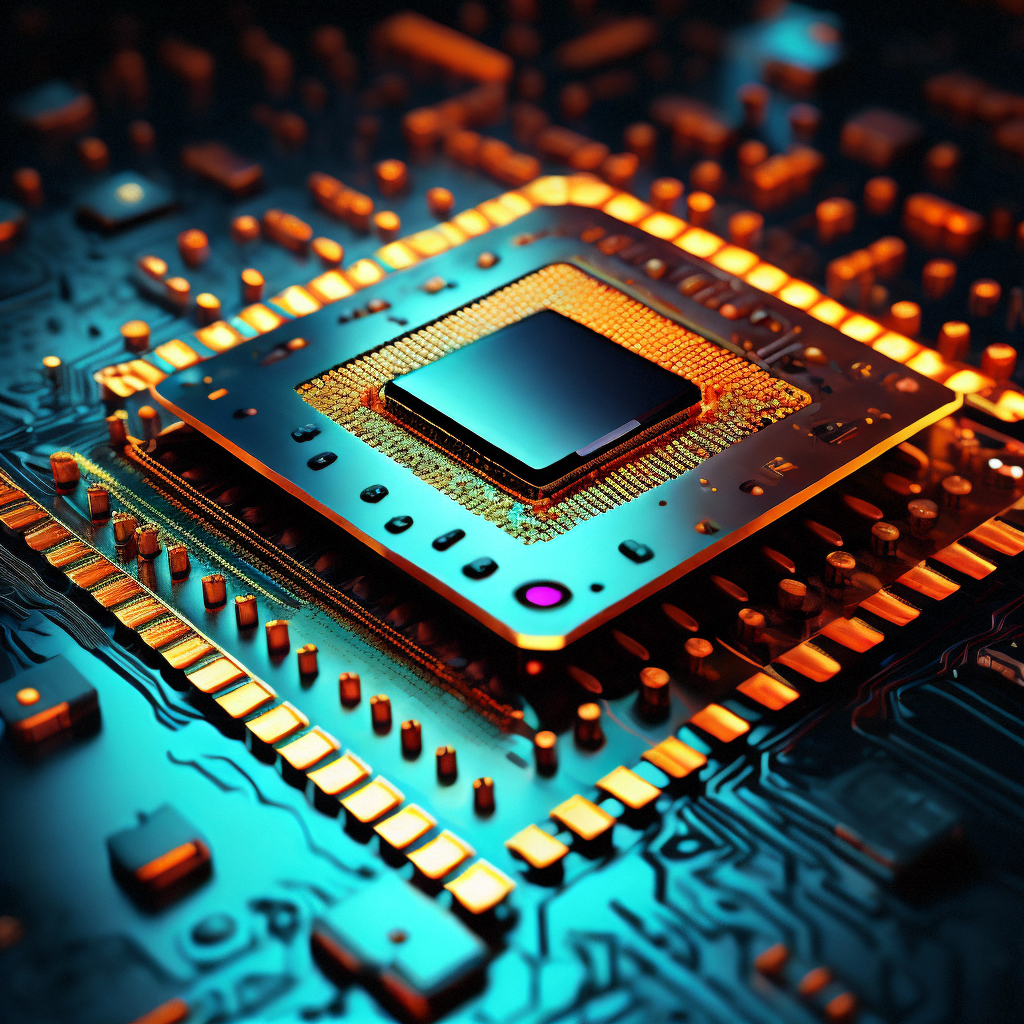
Renewable Energy:
* Solar Inverter Chips: Convert the direct current generated by solar panels into alternating current.
Solar inverter chips, also known as solar inverter microcontrollers or solar inverter control chips, are essential components in solar energy systems. They play a critical role in converting direct current (DC) electricity generated by solar panels into alternating current (AC) electricity that can be used to power homes, businesses, and the electrical grid. Here are the key features and functions of solar inverter chips:
⊿ DC to AC Conversion: The primary function of these chips is to convert the variable DC power generated by solar panels into a stable and synchronized AC output suitable for household or grid use.
⊿ Maximum Power Point Tracking (MPPT): Solar inverter chips often include MPPT algorithms to optimize the efficiency of energy conversion by tracking the point at which the solar panels generate maximum power under changing weather and lighting conditions.
⊿ Synchronization with the Grid: Grid-tied solar inverters synchronize the generated AC power with the utility grid to enable net metering and feeding excess energy back into the grid.
⊿ Islanding Detection: For grid-tied systems, these chips include islanding detection features to prevent the inverter from continuing to supply power to the grid during a grid outage, ensuring the safety of utility workers.
⊿ Safety Features: Solar inverter chips incorporate safety mechanisms such as overvoltage and overcurrent protection, ground fault detection, and automatic shutdown in case of faults.
⊿ Data Communication: Many modern solar inverter chips come with built-in communication interfaces (e.g., Wi-Fi, Ethernet, or Bluetooth) for monitoring and control, enabling users to track system performance and troubleshoot issues remotely.
⊿ Diagnostics and Reporting: These chips often provide diagnostic information and reporting capabilities to identify system malfunctions or underperformance.
⊿ Efficiency Optimization: Solar inverter chips are designed for high efficiency to maximize the amount of energy converted from solar panels, minimizing energy loss during conversion.
⊿ Temperature Management: Some chips include temperature management features to ensure optimal performance even in varying environmental conditions.
⊿ Compatibility: Solar inverter chips are compatible with various solar panel technologies and system configurations, including single-phase and three-phase systems.
⊿ For grid-tied inverters, these chips can help mitigate harmonics to ensure that the electricity fed back into the grid complies with grid standards.
⊿ Reliability: They are designed to operate reliably under harsh environmental conditions and are often tested for durability and performance.
* Wind Energy Control Chips: Used to monitor and control the operation of wind turbines.
These chips play a central role in managing and optimizing the performance of wind turbines by controlling various aspects of their operation. Here are the key features and functions of wind energy control chips:
$Turbine Control: These chips control the operation of wind turbines, including starting, stopping, and adjusting the rotational speed of the blades to maximize power generation while maintaining safety.
$Wind Speed and Direction Sensing: Wind energy control chips often incorporate sensors to measure wind speed and direction, allowing the system to adjust the blade angle and turbine speed for optimal energy capture.
$Pitch Control: They control the pitch of the turbine blades to optimize the aerodynamic performance and efficiency of the turbine, especially in varying wind conditions.
$Yaw Control: Wind turbines must be aligned with the wind direction. These chips manage the yaw mechanism to ensure the turbine is facing into the wind, which is critical for maximum energy capture.
$Generator Control: Wind energy control chips manage the generator connected to the turbine to convert mechanical energy from the rotating blades into electrical power.
$Maximum Power Point Tracking (MPPT): Wind turbine controllers often include MPPT algorithms to ensure the turbine operates at its optimal efficiency under changing wind conditions.
$Safety Features: These chips incorporate safety mechanisms such as overspeed protection to prevent damage to the turbine in strong winds or storms.
$Grid Integration: For grid-connected wind turbines, these chips enable synchronization with the electrical grid, ensuring the generated electricity is compatible with grid standards and can be fed into the grid.
$Communication Interfaces: Many wind energy control chips come with communication interfaces (e.g., Ethernet, Modbus, or wireless connections) for remote monitoring and control, allowing operators to track performance and diagnose issues.
$Fault Detection and Diagnostics: These chips provide real-time monitoring and diagnostics to detect and report issues such as mechanical failures or electrical malfunctions.
$Temperature Management: Temperature sensors and management features are often integrated into the chips to prevent overheating and ensure reliable operation.
$Energy Storage Integration: For some wind energy systems with energy storage solutions (e.g., batteries), these chips manage the charging and discharging processes to store surplus energy and release it when needed.
Customization and Adaptation: Wind energy control chips can often be programmed and customized to adapt to specific turbine designs and operating conditions.
* Battery Management System Chips: Used to monitor and manage batteries in renewable energy systems.
These chips are essential for ensuring the safe and efficient operation of batteries used in a wide range of applications, including electric vehicles, renewable energy systems, portable electronics, and more. Here are the key features and functions of BMS chips:
◥ Cell Monitoring: BMS chips continuously monitor the voltage and temperature of each individual battery cell within a battery pack to prevent overcharging, over-discharging, and overheating.
◥ Balancing: BMS chips can control the charging and discharging of battery cells to ensure that all cells in a battery pack have roughly equal voltage levels, which helps extend battery life and maintain consistent performance.
◥ State of Charge (SOC) and State of Health (SOH) Estimation: BMS chips estimate the SOC and SOH of the battery by analyzing cell data, enabling more accurate predictions of remaining capacity and overall battery health.
◥ Overvoltage and Undervoltage Protection: They trigger protective measures, such as disconnecting the load or charger, in case of overvoltage or undervoltage conditions to prevent cell damage or failure.
◥ Overcurrent Protection: BMS chips can monitor and limit the current drawn from or supplied to the battery, safeguarding it from excessive current flow.
◥ Short-Circuit Protection: In case of a short circuit, the BMS chip disconnects the battery to prevent safety hazards and protect the battery.
◥ Temperature Management: They monitor and control battery temperature to prevent overheating, which can lead to thermal runaway or fire.
◥ Communication Interfaces: Many BMS chips come with communication interfaces (e.g., CAN, I2C, UART) for data transfer, remote monitoring, and diagnostics.
◥ Safety Features: BMS chips incorporate various safety features, such as thermal fuses or protection circuits, to prevent catastrophic failures and ensure user safety.
◥ Cell Authentication: In some applications, BMS chips may include cell authentication and verification mechanisms to ensure the use of genuine and compatible battery cells.
◥ Firmware Updates: Some BMS chips support firmware updates to enhance functionality, security, and adapt to new battery technologies.
◥ Energy Efficiency: BMS chips are designed for energy efficiency to minimize power consumption when not actively managing the battery.
◥ Customization and Adaptation: These chips can often be programmed and configured to suit specific battery chemistries, pack configurations, and application requirements.
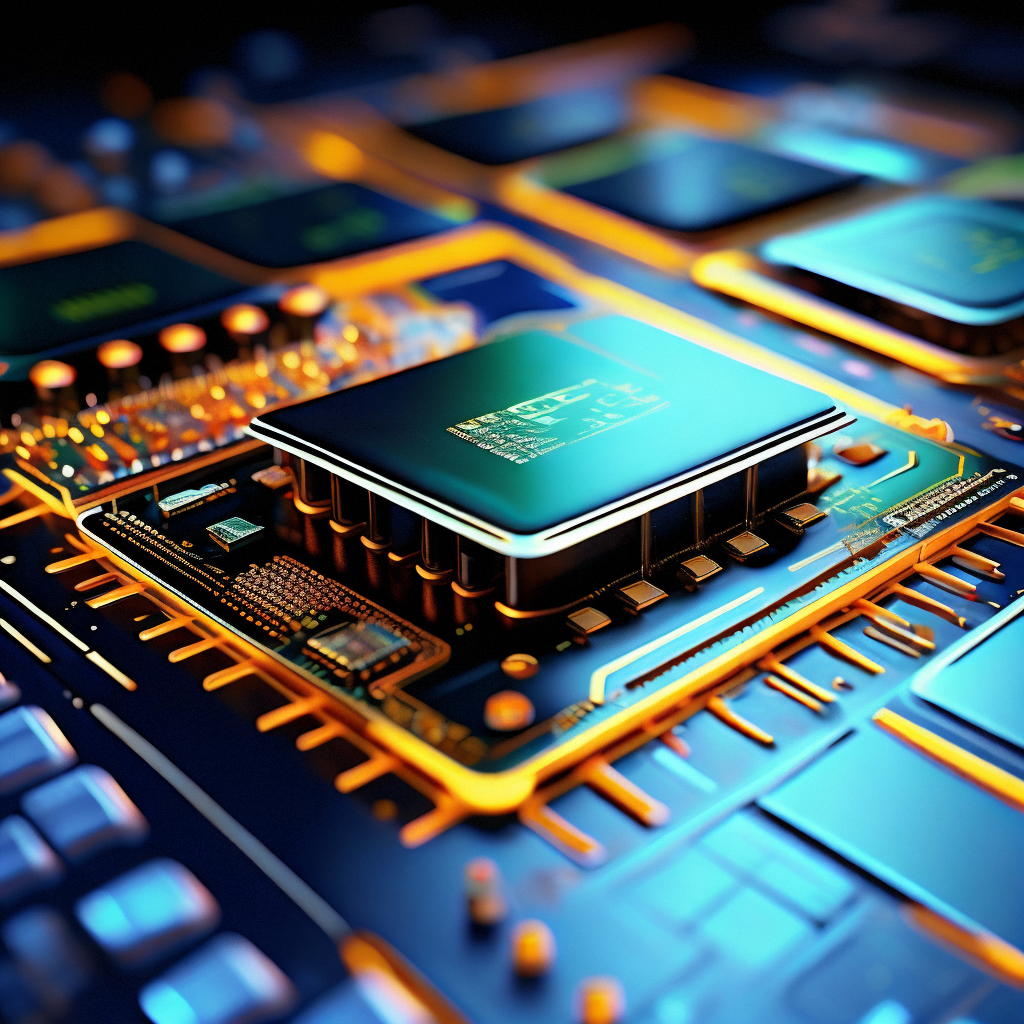
In 2022, global semiconductor output value will reach US$601.7 billion, a year-on-year increase of 1.1%; of which China's integrated circuit design revenue will be 279.7 billion yuan, a year-on-year increase of 12.0%.
According to customs statistics, in 2022, my country's integrated circuit exports exceeded 1,025.4 billion yuan, a year-on-year increase of 3.5%; accounting for 4.3% of China's total merchandise exports.
The two-year average growth of fixed asset investment in the electronic information manufacturing industry is 17.3%, which is much higher than the two-year average growth of 5.8% in the manufacturing industry.
Hardware innovation of overseas small and medium-sized terminal companies continues to surge, and they trust the Chinese supply chain
•In the past, it was focused on large items, and the supply chain was centralized, large vs. large à transformed into scenario-based & fragmented, with the industry dispersed in the middle and upstream
•The technological wave of 5G, AI, and IOT has given rise to more demands for intelligence
•Advances in manufacturing technology, 3D printing, modularization, etc. lower the threshold for hardware innovation (advantages of modularization: avoiding tariff barriers, flexibility, and rapid mass production)
•Mobile phones and electric cars (such as iPhone and Tesla) represent the image of China’s electronics industry




 Need Help?
Need Help?







